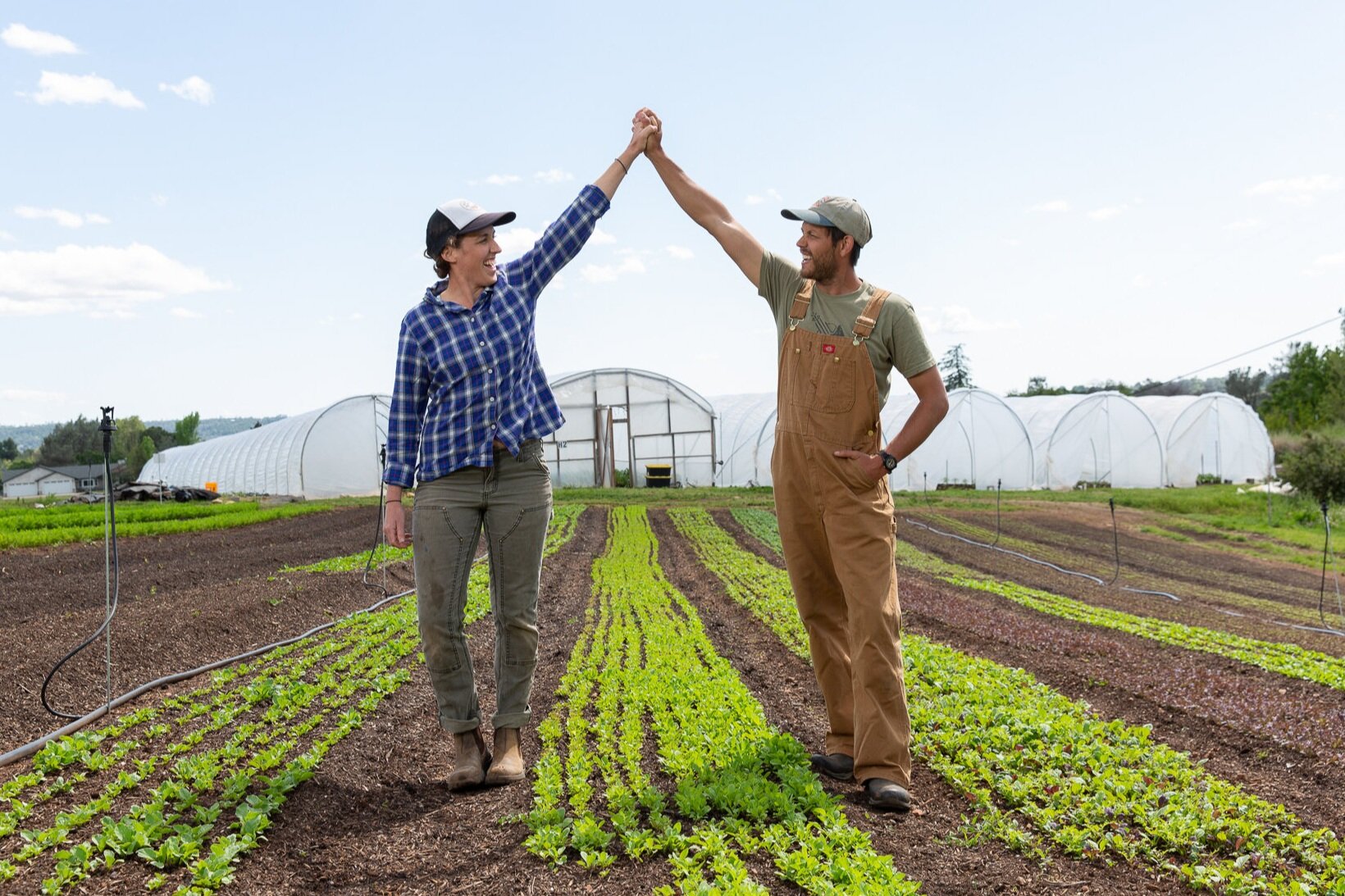Farming as an Environmental Solution
Buy local to make your impact global
Our dedication to a better community and planet is the core of Tahoe Food Hub’s mission. Among our founding principles, our commitment to addressing solutions to climate change through agriculture has shaped many of our programs to ensure positive impact on the community and environment.
Regenerative agriculture, a methodology of farming where food production creates healthy soils and draws down greenhouse gases, is one of the best ways to mitigate climate change, while producing organic food.
BUY A HARVEST BOX TODAY
Your money will provide you and your family with healthier food, and support our local community, protect our environment and better the world.
What is Regenerative Agriculture?
Regenerative agriculture is a term that encapsulates several farming practices that go beyond sustainable and organic to better the health of the soil and increase nutrients in food. These practices encourage systems to regenerate in natural ways using resources available within the system. Whether it is increasing biodiversity, rotating species, or allowing animals to graze produce fields, regenerative agriculture encourages nature to rely on its own resources.
Changing farming practices to regenerative systems has been shown to increase soil carbon, decrease greenhouse gas emissions, maintain yields, improve farm profitability, and improve the resilience of ecosystem services
Regenerative agricultural practices we support include:
Cover Cropping
Leaving fields fallow (without crop cover) can lead to soil loss and nutrient depletion. Cover crops act as a sort of “green manure” which brings nutrients to the soil and protects it from the elements.
Diversifying Crop Rotation
Monocropping, or the act of only growing one type of crop, is common in industrial agriculture. This leads to the loss of nutrients from soils and the eventual loss of productivity. Our farmers rotate their crops throughout the year with each plant removing and depositioning different nutrients into the soil, they guarantee long term sustainability.
Organic Amendments
We do not support any nonorganic chemical use on crops we buy. This ensures what we sell is healthy for consumers and reduces the amount of chemical runoff that gets into streams, wetlands and wildlife.
Rotational Grazing
Moving livestock between pastures on a regular basis allows plants to regrow, deepen their roots, and survive longer. This method of livestock production reduces greenhouse gas emissions and keeps landscapes healthy.
Composting
Composting leftover produce or cover crops brings more nutrients to the soil and increases carbon sequestration. The nutrients added to soil through composting increase crop yields and boost microorganism biodiversity.
By working with independent local farms we can ensure that our farmers produce food in ways that better the planet and our community. For those farmers looking to further their regenerative practices, Tahoe Food Hub is here to help them in their transition with access to grants, small loans and resources.
What does this have to do with Climate?
Carbon Sequestration, the act of storing CO2 away from the atmosphere, starts with photosynthesis where Carbon gas is converted into sugars by plants. Plants send these sugars into the soil through their roots, where the sugars are used by microorganisms that provide nutrients such as nitrogen to the plants. These microorganisms, commonly referred to as mycorrhizal fungi, dive deep into the soil where the carbon is stored as “soil organic matter”.
This process happens across the globe naturally, yet is disturbed by many modern farming practices. Tilling releases these carbon stores from the soil by bringing the dead fungi to the surface. Pesticides and fertilizers volatize the sequestered carbon, turning it from solid to gas, which releases it to the atmosphere as well. By encouraging our farmers to use the regenerative practices above, we ensure the carbon trapped naturally stays out of the atmosphere.
As we begin to trap more carbon in the soil, we make the landscape more resilient to climate change as well. Carbon can naturally trap water in the soil, holding on to it until it is needed by plants. A single pound of carbon can hold 40 pounds of water, making a farm field rich in carbon well prepared to survive drought years. As these carbon rich systems succeed through dry years and natural disasters, the fungi and microbes proliferate, making the system more efficient as time goes on.
So how does all this affect our local environment?
When you eat food from the Tahoe Food Hub, you know where it comes from. Most food is sourced within a 100-mile circumference around Truckee and can be thought of as our food landscape, much the same way a valley is considered a watershed. All of the inputs - water, climate, biodiversity, and pollutants determine the quality of the outputs - food. Through the application of regenerative and organic farming practices, we ensure that the food we eat is the product of a healthy environment. As we work to mitigate climate effects and keep our immediate environment pristine, we preserve the long term health of the landscape and our community.













